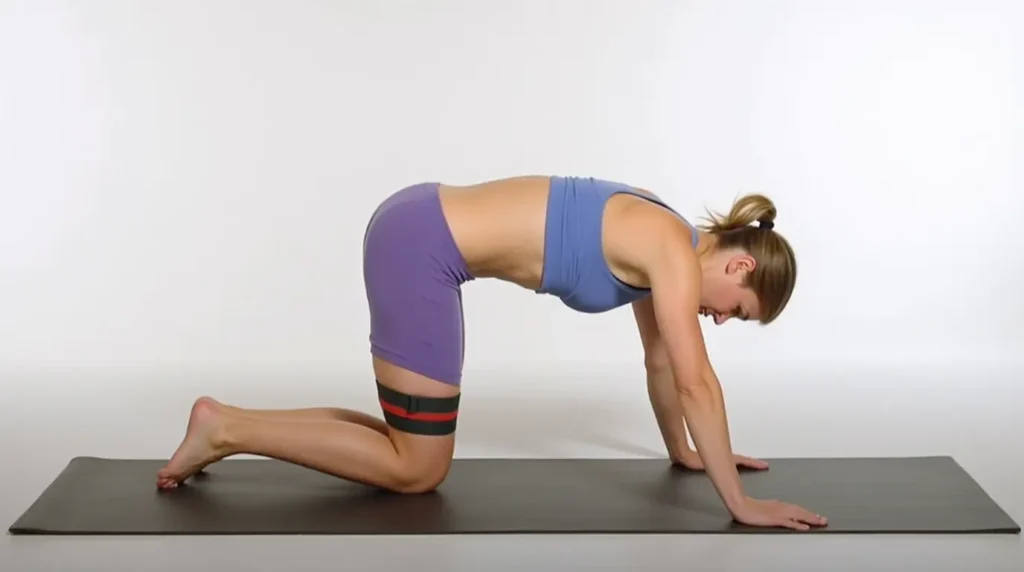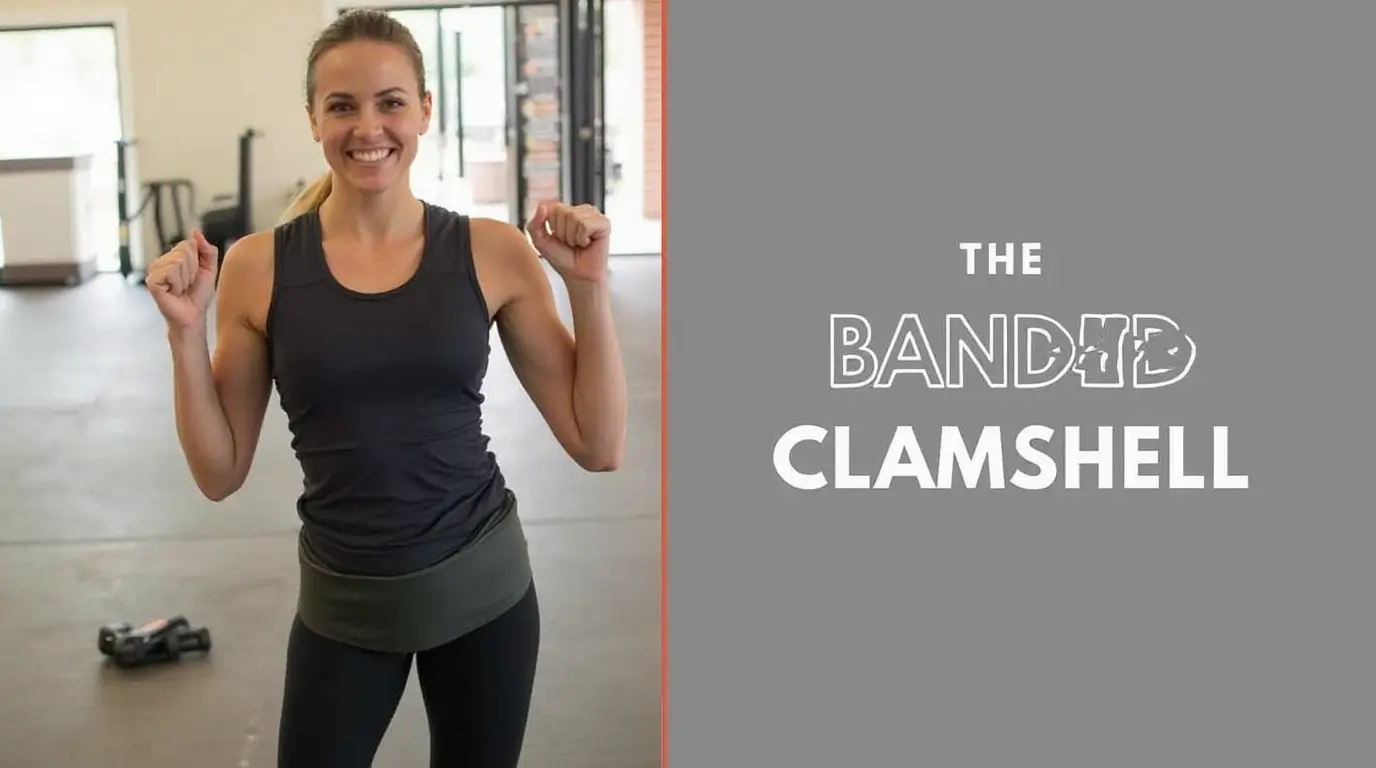Start Strong, Finish Stronger: Why the Banded Clamshell is a Game-Changer for Your Fitness Routine
There’s no shortage of exercises that promise to sculpt your body and improve your fitness. However, when it comes to targeting your hips, glutes, and outer thighs, few exercises are as effective and accessible as the banded clamshell. Whether you’re an athlete looking to enhance performance or someone seeking better mobility, the banded clamshell workout can make a significant impact on your strength, stability, and overall fitness.
But here’s the catch: many people don’t realize the true potential of this exercise because they either perform it incorrectly or don’t understand its benefits. The banded clamshell isn’t just a warm-up exercise—when done right, it’s a powerhouse move that can help you unlock your glutes, stabilize your hips, and enhance your lower body performance.
In this comprehensive guide, I’ll walk you through everything you need to know about the banded clamshell workout. From step-by-step instructions on how to do the exercise properly to tips on maximizing your results, we’ll dive deep into how this simple move can transform your fitness routine.
For those focusing on lower body training, pairing the banded clamshell with a dumbbell leg workout can improve strength and endurance efficiently.
Table of Contents
Understanding the Banded Clamshell: A Glute and Hip Powerhouse
The banded clamshell is a foundational exercise, often recommended for people of all fitness levels, whether you’re new to exercise or a seasoned gym-goer. It’s a powerful way to target your gluteus medius, which is one of the key muscles in your glutes, as well as your outer thighs and hip abductors.
What is the Banded Clamshell?
The banded clamshell is a lower body exercise where you lie on your side with a resistance band around your legs just above your knees. By pushing against the band, you activate your outer glutes and hips. This movement mimics the natural opening and closing motion of a clamshell, which is where the name comes from.
Benefits of the Banded Clamshell
- Strengthens Glutes and Hips: The primary muscles targeted are the gluteus medius, gluteus minimus, and hip abductors.
- Improves Hip Mobility: Helps to improve flexibility and range of motion in your hips.
- Increases Lower Body Stability: A stronger glute and hip area enhances overall body stability, which can prevent injuries in other exercises.
- Reduces Lower Back Pain: Strengthening your glutes can help reduce the strain on your lower back.
- Prevents Injury: By increasing strength in the hip area, you reduce the risk of injuries during sports or daily activities.
Why It Works
The banded clamshell is effective because it uses resistance to target smaller stabilizing muscles, which don’t typically get activated during traditional leg exercises. The band adds constant tension, ensuring your muscles remain engaged throughout the movement. This makes the exercise incredibly effective for strengthening your lower body and improving your hip stability.
How to Perform the Banded Clamshell: Step-by-Step Guide
Getting the banded clamshell right is crucial to ensure you’re targeting the right muscles and avoiding any unnecessary strain. Here’s a simple, step-by-step guide that will help you perform this exercise properly.
Step 1: Set Up Your Band
Before starting, place the resistance band around your thighs just above your knees. Make sure the band is neither too tight nor too loose—there should be enough resistance to feel the activation in your glutes when you open your knees.
- Tip: Start with a medium-resistance band. As you get stronger, you can use a heavier band to challenge yourself.
Lie on your side with your legs stacked on top of each other and bent at about a 45-degree angle. Your body should form a straight line from your head to your heels. Place your head on your lower arm and stabilize your torso with your upper arm resting on your hip.
Step 2: Perfect Your Form
Keeping your feet together, gently open your knees as wide as you can while keeping your feet touching. Your glutes should be engaged as you lift your top knee, ensuring that your hips remain square and do not rotate. The key here is to move only your leg, without letting the rest of your body shift.
- Tip: Keep your core engaged throughout the movement to maintain good posture and alignment.
Step 3: The Clamshell Movement
Slowly lower your knee back to the starting position and repeat the movement for 15-20 reps on one side before switching to the other. Try to perform the exercise slowly, focusing on control and form.
- Pro Tip: Ensure that you’re not letting your hips move during the exercise. The goal is to isolate the glutes and hip abductors for maximum benefit.
Maximizing Results: Tips for the Most Effective Banded Clamshell Workout
Once you’ve mastered the basics of the banded clamshell, it’s time to take your workout to the next level. These tips and tricks will help you maximize the effectiveness of the exercise and ensure that you see results.
Proper Band Placement
It’s essential to position the resistance band correctly to target the right muscles. Make sure the band is placed just above your knees, and there’s enough resistance to feel the tension in your hips and glutes when you move. A well-placed band will give you the best results.
- Tip: If you feel the exercise mostly in your lower back, it’s likely that your form is off. Double-check that your hips are stacked and not rotating during the movement.
Incorporating Variations
The banded clamshell is a versatile exercise. Here are a few variations you can try to intensify your workout:
- Pulse Variation: After opening your knees, pulse for 2-3 seconds at the top before lowering your knee back down. This increases time under tension, which maximizes muscle activation.
- Side Plank Variation: Add a side plank to the movement by balancing on your forearm. This will engage your core and take your glute activation to the next level.
- Double Band Variation: For more resistance, use two bands stacked on top of each other. This will force your glutes and hip abductors to work even harder.
Frequency and Reps
For the best results, aim to do 2-3 sets of 15-20 reps per side. As you get stronger, increase the number of sets or reps, or use a more resistant band.
- Tip: Include 2-3 sessions of the banded clamshell each week for optimal strength gains.

Common Mistakes to Avoid for Optimal Banded Clamshell Results
While the banded clamshell is a relatively simple exercise, it’s easy to make mistakes that could hinder your progress. Avoid these common pitfalls to ensure you’re getting the most out of your workout.
Overextending the Movement
Many people try to open their knees too wide, thinking it will make the exercise more effective. However, overextending can cause your hips to rotate, which defeats the purpose of isolating the glutes.
- Tip: Focus on a small, controlled range of motion. The goal is to activate the glutes without involving other muscles.
Lifting Too Fast
The banded clamshell relies on tension to activate the muscles, and fast movements can reduce this tension. Always perform the exercise slowly and with control to maximize the muscle engagement.
Not Using Enough Resistance
Using a band that’s too loose won’t give your glutes enough of a workout. Start with a medium-resistance band and progress to a stronger band as your glutes become stronger.
Misalignment of the Body
Your form is crucial when performing the banded clamshell. Avoid twisting your torso or rotating your hips. Keep everything aligned to isolate the muscles in the glutes and hips.
Tracking Your Progress with the Banded Clamshell Workout
To get the best results from the banded clamshell, you need to track your progress. Here are some ways to monitor your improvement.
How to Measure Results
- Strength Progression: Keep track of how much resistance you’re using over time. As you get stronger, move to heavier resistance bands or increase the number of sets and reps.
- Mobility Gains: Take note of your hip flexibility. Are you able to open your knees wider? Are you noticing less discomfort during the exercise?
- Post-Workout Feel: Pay attention to how your glutes feel after the workout. Are you feeling sore in the right areas? This indicates muscle activation and growth.
The Science Behind the Banded Clamshell: Why It Works
It’s important to understand why the banded clamshell is such an effective exercise. The resistance band creates constant tension, which activates your glutes and hip abductors more than bodyweight alone would. This allows you to strengthen and stabilize your lower body muscles in a way that supports other physical activities, from running to squatting.
Activation of the Glutes and Hip Abductors
When you perform the clamshell, the band forces you to open your legs against resistance. This activates the gluteus medius and minimus, key muscles in hip stability. These muscles are responsible for controlling your hip movement, which is crucial for balance and mobility.
Impact on Lower Back Health and Posture
By strengthening your glutes and hips, you reduce strain on your lower back. This can improve posture, alleviate back pain, and even prevent injuries in other activities. The banded clamshell is a foundational movement for anyone looking to improve their overall lower body health.
Frequently Asked Questions (FAQs) About the Banded Clamshell Workout
What muscles does the banded clamshell target?
The banded clamshell primarily targets the gluteus medius, gluteus minimus, and hip abductors. These muscles are crucial for hip stability and balance.
How many sets and reps should I do for maximum results?
For optimal results, aim for 2-3 sets of 15-20 reps per side. As you become more experienced, you can increase the number of sets or use a higher-resistance band.
Can the banded clamshell help with lower back pain?
Yes! By strengthening your glutes and hips, the banded clamshell helps to alleviate pressure on your lower back and improve your posture.
Is the banded clamshell suitable for beginners?
Absolutely! The banded clamshell is an excellent exercise for beginners because it’s low-impact and can be easily modified by adjusting the band resistance.
Conclusion: Unleash the Full Potential of Your Glutes and Hips with Banded Clamshells
The banded clamshell is more than just an exercise—it’s an essential move for anyone looking to build a stronger, more stable lower body. Whether you’re an athlete, a fitness enthusiast, or simply looking to improve your posture and mobility, adding this simple yet effective movement to your routine will pay off in the long run.
With the right form, progression, and consistency, you can unlock the full potential of your glutes and hips. Keep practicing, track your progress, and soon you’ll notice stronger, more stable hips that enhance your overall fitness performance.
Are you ready to add the banded clamshell to your workout routine? Start today, and see the difference it makes in your strength and mobility!For additional strength development, consider incorporating cable chest workouts to complement your upper body strength training.

